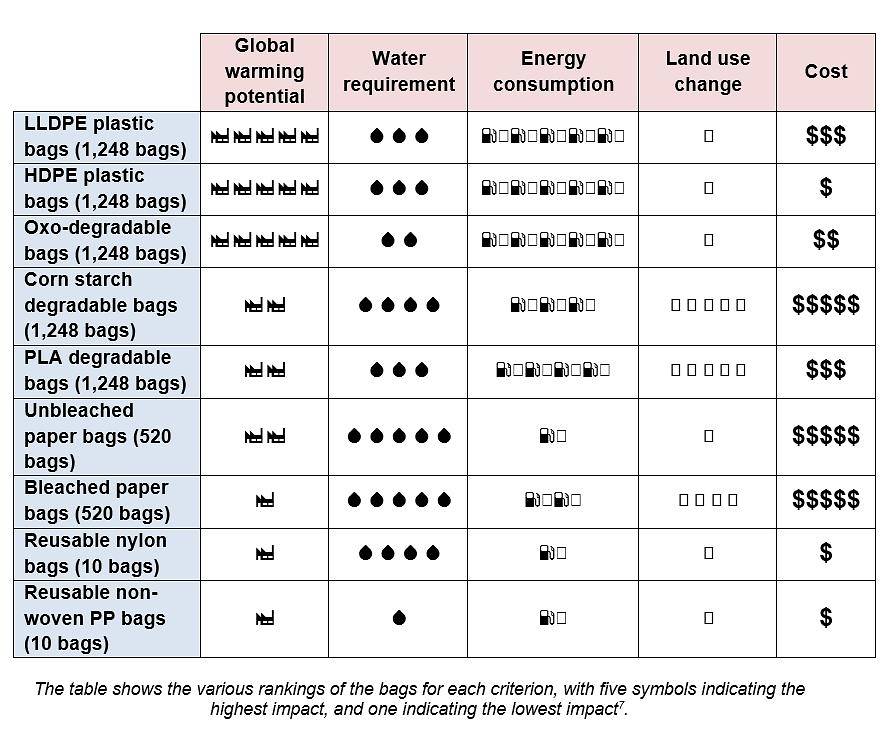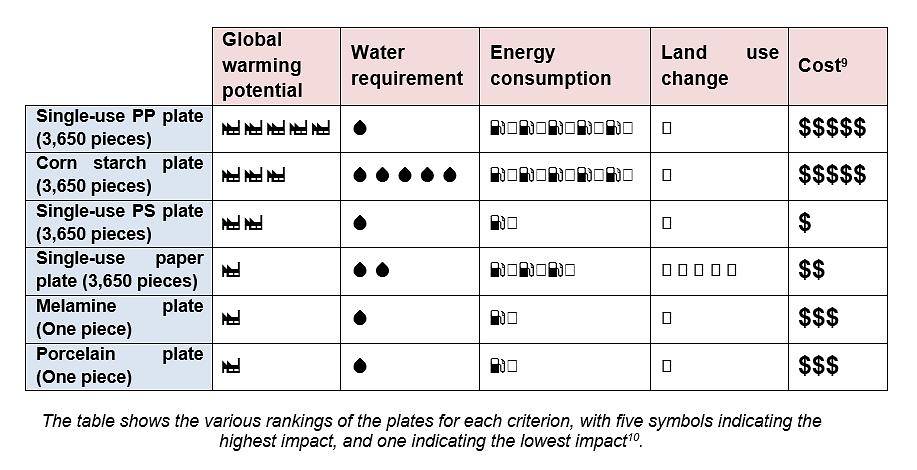SINGAPORE: The use of one reusable bag over a year could replace the use of 125 single-use plastics bags or 52 single-use paper bags, a life-cycle assessment (LCA) study commissioned by the National Environment Agency (NEA) shows.
An LCA study evaluates the environmental impact associated with the stages of a disposable and reusable item’s life cycle.
“Due to their single-use design and function, plastic bags were found to have the biggest environmental impact in terms of greenhouse gas emissions and energy use,” NEA said in a release.
“The greenhouse gases associated with the processing of crude oil used as source material to manufacture the bags, and the greenhouse gases from the bags’ incineration, contribute to climate change.”
Last year, a third of the roughly 1.67 million tonnes of domestic waste disposed in Singapore comprised packaging waste, which includes single-use disposables such as plastic bags and food packaging.
The amount of packaging waste discarded annually in Singapore is enough to fill more than 1,000 Olympic-size swimming pools.
“While single-use plastic bags are needed by households to bag waste, the excessive consumption of disposables is a waste of resources and it contributes to our carbon footprint and climate change,” NEA said.
The study covered the common types of single-use plastic and degradable bags, as well as paper and reusable bags, used in Singapore.
For comparison, researchers assumed that a family buys 50 items per week. The 50 items were placed in the different types of bags to determine how many of each type were needed to carry the 50 items.
Based on this, the study found that the use of 10 reusable bags, or non-woven polypropylene or nylon bags, over a year is equivalent to the use of 1,248 plastic or degradable bags, or 520 paper bags.
“Single-use paper bags and degradable bags are often seen as eco-friendly alternatives to plastic bags,” NEA said. “However, paper bags need large amounts of water to make and cannot be used to bag wet items.”

Scoring for environmental and cost impact for carrier bags. (Source: NEA)
As for degradable bags, the fact that some types of them – like oxo-degradable bags – are made of plastic with additives to accelerate degradation means they leave a similar environmental impact to plastic bags when incinerated.
“In Singapore, waste is incinerated and not left in landfills to degrade,” NEA said. “In addition, oxo-degradable bags could interfere with the recycling process when mixed with conventional plastics.”
Other types of degradable bags, like plant-based polylactic acid bags and corn-starch bags, require large tracts of forest land to be converted into farmland and huge amounts of water to grow their raw materials, NEA added.
“Taking into consideration both the monetised cost and environmental impact, reusable bags emerged as the most environmentally-friendly option for carrying groceries and similar items,” NEA stated.
“Other than using reusable bags, consumers can also reduce their impact on the environment by reusing single-use bags.”
FOOD PACKAGING
The same study also found that the use of one reusable plate or container over five years could replace the use of 3,650 pieces of single-use plates or containers.
For dine-in plates, the study found that single-use plastic plates resulted in the most greenhouse gas emissions and energy use during their life cycle as they are made from crude oil, NEA said.
“It also found that the manufacturing process for plant-based corn starch plates is energy intensive,” it added.
Similarly for take-away containers, the study found that single-use plastic containers resulted in the most greenhouse gas emissions and energy use.
“Single-use paper boxes with an inner plastic sheet, used for dishes such as fried rice, were equally energy intensive to make,” NEA said.
“Furthermore, the nature of the raw materials entails high consumption of water and the conversion of large tracts of forest land.”
This part of the study covered common types of dine-in plates and take-away containers used in Singapore. For comparison, researchers assumed that two meals were served daily.

Scoring for environmental and cost impact for dine-in plates. (Source: NEA)
Melamine and porcelain dine-in plates were found to have lower impact on the environment as compared to disposables, the study found, as they can be reused multiple times, taking up fewer resources and emitting less greenhouse gases during their life-cycle.
Meanwhile, the study also found that reusable take-away containers, which consume more water for washing purposes, left the same environmental impact as their disposable counterparts.
However, the study added that reusables were still more environmentally friendly in other aspects like greenhouse gas emissions and energy use. In addition, the study did not account for potential littering issues and increased landfill arising from the use of disposables.
SOLUTIONS
Senior Minister of State for the Environment and Water Resources Amy Khor said a more sustainable way of reducing the environmental impact of carrier bags and food packaging is to “tackle the excessive consumption of all types of disposables”.
Based on the study’s findings, “imposing a charge or ban on disposable plastic bags and substituting them with other types of disposable bags is unlikely to improve environmental outcomes”, she added in her ministry’s Budget debate speech on Tuesday (Feb 6).
“The study concluded that consumers can generally reduce their environmental impact by using reusable bags and food containers instead of disposables.”
To that end, Dr Khor said agencies will step up engagement with stakeholders to “cut down the excessive use” of plastic bags and disposables like single-use containers.
For example, she pointed out that online food delivery service, Foodpanda, is working on a trial where customers can opt out of disposable cutleries when ordering food, while consumers who brought reusable bags to supermarkets earned incentives under Zero Waste Singapore’s Bring Your Own campaign last year.
Businesses would also need to report the type and amount of packaging they put on the market and their plans for reduction by 2021, Dr Khor stated, adding that industry consultations will start this year.
“It could also be as simple as cashiers proactively asking customers at payment counters if they want a plastic bag, instead of automatically giving them one,” Dr Khor suggested.
“We will continue to support such efforts while holistically tackling the broader issue upstream by reducing all types of packaging waste at source.”




